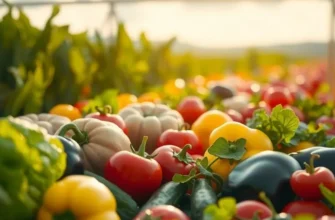Custards are a delightful treat, perfect for both sweet and savory dishes. Whether you’re making a classic vanilla custard or a rich chocolate variant, the technique remains crucial for achieving that velvety texture and creamy flavor. Learning how to perfect your custard can elevate your desserts and impress your guests. Here, we break down essential tips to help you master custard-making, no matter your experience in the kitchen.
Choosing the Right Ingredients

The quest for the perfect custard begins with selecting high-quality ingredients. Proper ingredient selection elevates even the simplest custard to a memorable delight. As a foundation, opt for the freshest eggs available. Their binding qualities are integral to a smooth and silky texture, offering unrivaled richness. Seek out eggs with deep yellow yolks, indicative of a well-nourished chicken, ensuring a more flavorful custard.
When it comes to dairy, the choice between cream and milk or a combination is pivotal. Heavy cream imparts a lush, velvety mouthfeel while adding a decadent richness. For a lighter custard, consider whole milk, which maintains creaminess without overwhelming the palate. Mixing cream and milk is a popular approach, striking a balance between texture and flavor.
Although traditional custard relies heavily on dairy, those seeking dairy-free options need not compromise on quality. Explore plant-based milks like almond or oat milk, but keep in mind that their varying fat content might alter the custard’s texture. Fortifying with non-dairy creamer can help restore the desired creaminess. For more on crafting flavorful substitutes, visit Cooking Without Gums.
Flavorings are where true creativity shines. Vanilla reigns supreme, enhancing custard’s inherent notes with a warm, comforting aroma. Opt for pure vanilla extract, free of artificial additives, to ensure unmistakable depth and fragrance. For an indulgent twist, consider splitting and scraping a fresh vanilla bean. This lends both visual charm and an unparalleled intensity of flavor.
Lemon zest adds a delightful citrusy brightness, effortlessly complementing custard’s richness. When integrating citrus, consider organic produce to avoid unwanted pesticides in your zest. Likewise, a dusting of nutmeg or a splash of aromatic liquor can transform the custard’s profile from simple to sophisticated.
Moreover, exploring different sweeteners can subtly alter the custard’s character. Classic white sugar is unobtrusive and consistent, maintaining the authenticity of traditional recipes. Meanwhile, brown sugar introduces a hint of toasty caramel that underscores the dairy’s warmth.
Paying attention to these details may seem trivial, yet each choice plays a crucial role. Selection of ingredients doesn’t merely influence taste; it defines texture, aroma, and presentation. With thoughtful selection, your custard can transition from good to extraordinary, pleasing both the eyes and the palate. As you refine your ingredients, remember: the path to flawless custard is one of careful consideration and artful craftsmanship.
Techniques for Cooking Custards

Achieving the perfect custard starts with mastering critical cooking techniques like temperature control, mixing methods, and tempering eggs. The journey to a smooth, creamy custard without curdling might seem daunting, but by focusing on these techniques, success is well within reach.
Temperature Control: The heart of custard-making lies in controlled heat. Custards require gentle cooking over low to medium heat. A high temperature can cause the eggs to scramble, leading to a curdled texture. It’s essential to monitor your mixture closely. Using a cooking thermometer can help ensure the ideal temperature range, generally around 160°F to 180°F. This range allows the custard to set without separating.
Mixing Methods: How ingredients are combined plays a crucial role. Start by whisking the sugar and eggs until they reach a pale and slightly thickened consistency. This initial step provides stability to the mixture. When adding milk or cream, do so gradually while continuously stirring. This even distribution prevents sudden temperature shocks that could cook the eggs prematurely.
Tempering Eggs: Tempering is a vital technique when working with custards. It involves slowly raising the temperature of the eggs before combining them with the hot liquid. To achieve this, slowly add a small amount of hot milk or cream to the beaten eggs, whisking constantly. Once the eggs are gradually warmed, you can safely incorporate them into the rest of the heated mixture. This technique prevents curdling by reducing the risk of rapid heat reaction.
Stovetop and Oven-Baked Custards: Whether you’re using a stovetop or oven, adjustments are key. Stovetop custards require constant stirring and vigilant heat monitoring. A double boiler can help maintain an even temperature, reducing the risk of too much direct heat. For oven-baked custards, a water bath (bain-marie) is indispensable. By placing the baking dish in a larger pan filled with hot water, you create a gentle, even cooking environment, crucial for consistent texture.
Gaining confidence in custard-making entails understanding these techniques and practicing them regularly. These methods not only apply to sweet custards but also to savory ones, making them essential tools in any culinary repertoire. For those interested in enhancing their skills in related kitchen techniques, exploring easy sauce simmering can further enrich your culinary adventures.
With patience and practice, these steps pave the way for custard excellence, ensuring every spoonful is smooth, creamy, and delectably satisfying.
Final words
Perfecting custards opens up a world of culinary possibilities, from desserts to savory dishes. By selecting high-quality ingredients and mastering the cooking techniques, you can create delightful custards that will impress and satisfy anyone lucky enough to taste them. Remember, patience and practice are key—each attempt brings you closer to custard perfection. So go ahead, experiment, and enjoy the delicious results of your efforts in the kitchen.







